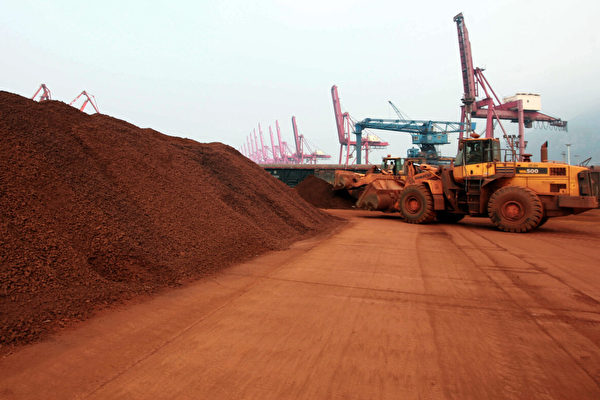Due to China’s overcapacity, international rare earth prices have fallen by 20% in the past year.
On June 29, China unveiled the “Rare Earth Management Regulations,” which stipulate comprehensive state supervision with the intention of further controlling strategic resources and tracking the flow of rare earth products. However, despite Beijing’s efforts to tighten control over the rare earth industry, the market remains subdued.
According to data from Argus Media cited by Nikkei Asia, on July 11, the price of neodymium dropped by 23% compared to the end of July 2023, while dysprosium declined by 24%.
As of Thursday, July 18, the Rare Earth Price Index released by the China Rare Earth Industry Association has fallen by approximately 20% since late July 2023.
Rare earths are a collective term for 17 metallic elements on the periodic table. Against the backdrop of a new wave of technological revolution and industrial transformation, rare earths are seen as strategic mineral resources, also referred to as “industrial vitamins” and the “mother of new materials.”
Rare earth elements are essential raw materials for a variety of high-end products such as smartphones, electric vehicles, wind turbines, and intercontinental missiles. However, with increased production in China, rare earth prices have experienced a decline.
The Chinese authorities allocate production quotas for rare earth producers, with quotas totaling 135,000 tons granted in the first half of 2024, representing a 12.5% increase from the same period last year. However, the market demand for rare earths has not met expectations, leading to the surplus capacity being absorbed by the industry.
In the first quarter of this year, major rare earth producers in China saw significant profit declines, with “Northern Rare Earth” experiencing a 94% year-on-year drop in net profit, “China Rare Earth” recording a loss of about 289 million yuan, “Guangcheng Nonferrous” incurring a loss of 304 million yuan, and “Shenghe Resources” facing a loss of 216 million yuan.
Nikkei Asia pointed out that in recent years, the Chinese government has consistently increased rare earth production quotas. In 2023, on top of quotas for the first and second halves of the year, Beijing introduced a third quota group, bringing the annual total to 255,000 tons, a 21% increase from 2022. Many believe this year’s quotas will surpass those of 2023.
The increase in production seems to aim at maintaining the top position in output and exports in the world market, using rare earths as leverage in diplomatic negotiations. Some believe that intentionally lowering prices is to support the green energy industry or squeeze the profit margins of Western producers.
According to The Wall Street Journal, Ryan Castilloux, Managing Director of Adamas Intelligence, stated that the Communist Party of China is willing to incur significant losses in certain segments of the value chain to help achieve downstream goals, such as exporting electric cars to international markets. This practice is similar to how China disregards economic benefits by lowering lithium prices. Another perspective suggests that the surplus rare earth production may be intended to squeeze the profit margins of Western producers and hinder Western development of rare earth alternatives.
However, in response to the Western push to reduce risks associated with China, the global rare earth production landscape is changing rapidly.
Currently, the United States has expanded domestic rare earth production to reduce reliance on China, while other countries are taking similar measures. Many nations have intensified exploration efforts to identify domestic rare earth deposits.
Despite the term “rare” in their name, rare earths are more abundant in reserves than silver and gold, and the deposits are not particularly concentrated. Currently, China retains the dominant position in rare earth elements because mining and refining these metals can have environmental impacts, an aspect that China is less concerned about compared to Western countries.
Economist Milton Ezrati previously noted that China’s dominance in rare earth elements is a double-edged sword. If China frequently and actively denies supplying these critical materials to users, it could lose its global leadership position, as Western countries are likely to develop other resources and refining technologies that meet their environmental requirements.
According to data from the U.S. Geological Survey, in the early 2010s, China accounted for 80% to 90% of global rare earth production. By 2023, this proportion had decreased to around 70%. At the same time, global production reached 350,000 tons in 2023, more than double the amount in 2013. Therefore, the ‘rarity’ of rare earths is not as pronounced as before.
Therefore, market response to China’s rare earth control measures has been lukewarm.
Ellie Saklatvala, Senior Editor of non-ferrous metals at Argus Media, suggested that China’s policies merely formalize existing regulations and may not necessarily impose new trade restrictions.

